It was Oct. 24 1963 when the Swedish Academy announced its laureate for the Nobel Prize in literature, making Giorgos Seferis the first Greek to receive such an honor. Sixty years later the Benaki Museum will inaugurate the exhibition: “GEORGE SEFERIS: Sixty years since the Nobel Prize” at the Ghika Gallery. The exhibition, open until Feb. 24 pays homage to one of modern Greece’s most influential poets.
Inaugurated by the Swedish ambassador in the country, the exhibition is divided in three sections aiming to revive the atmosphere of the Nobel Prize announcement day as well as that of the days that followed. The first part focuses on Seferis’ Nobel Prize announcement and the atmosphere of that day, the second is related to the award ceremony in Stockholm with the last part on the aftermath of the award.
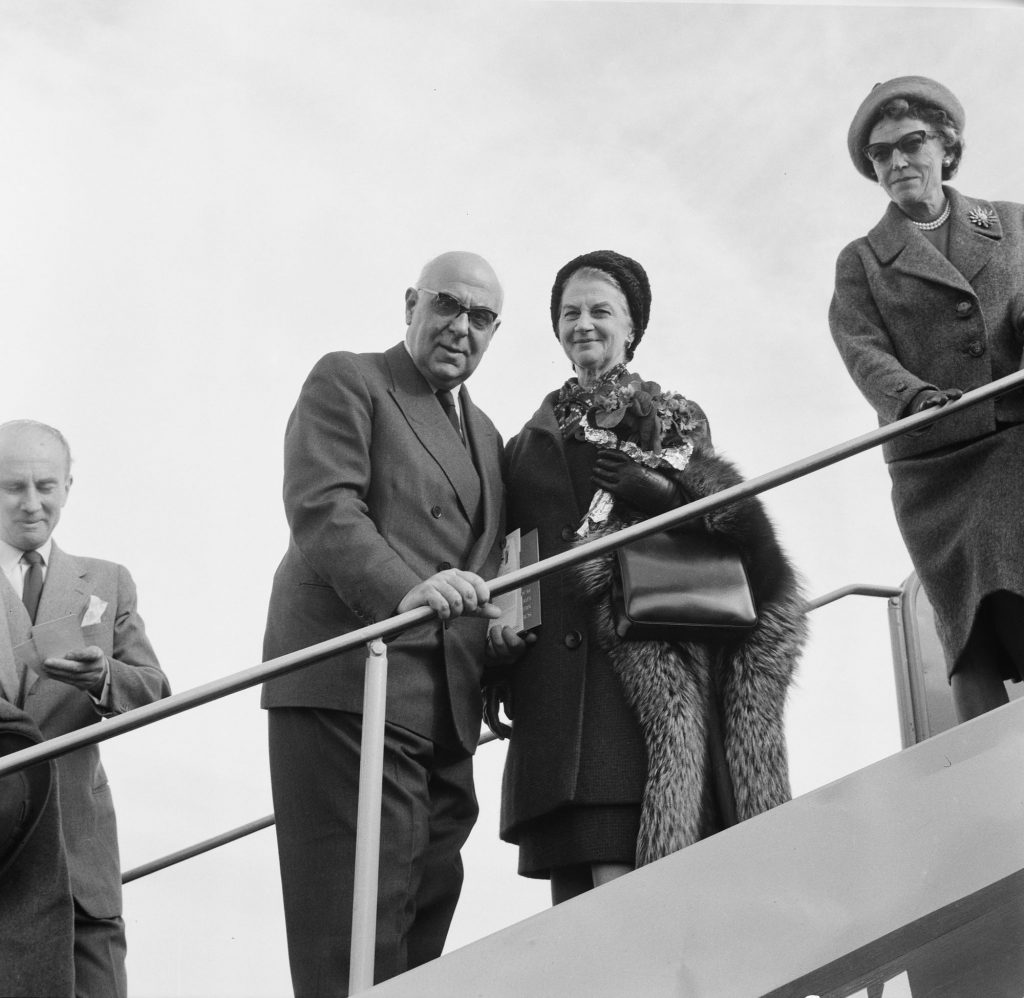
Athens, Dec. 6, 1963, morning. Giorgos and Maro Seferis depart for Stockholm for the Nobel Prize ceremony in 1963. Kostas Megalokonomou
©Benaki Museum/Photographic Archives
The exhibition features various artefacts and photographic documents including the poet’s emblematic Nobel Prize and medal, parts of Ghika Gallery’s permanent collection donated by Maro Seferis’, the poet’s wife. Further material derives from “George Seferis Papers” a collection of the American School of Classical Studies of Athens’ archives and photos from the Benaki’s Photographic Archives – the Megalokonomou collection.
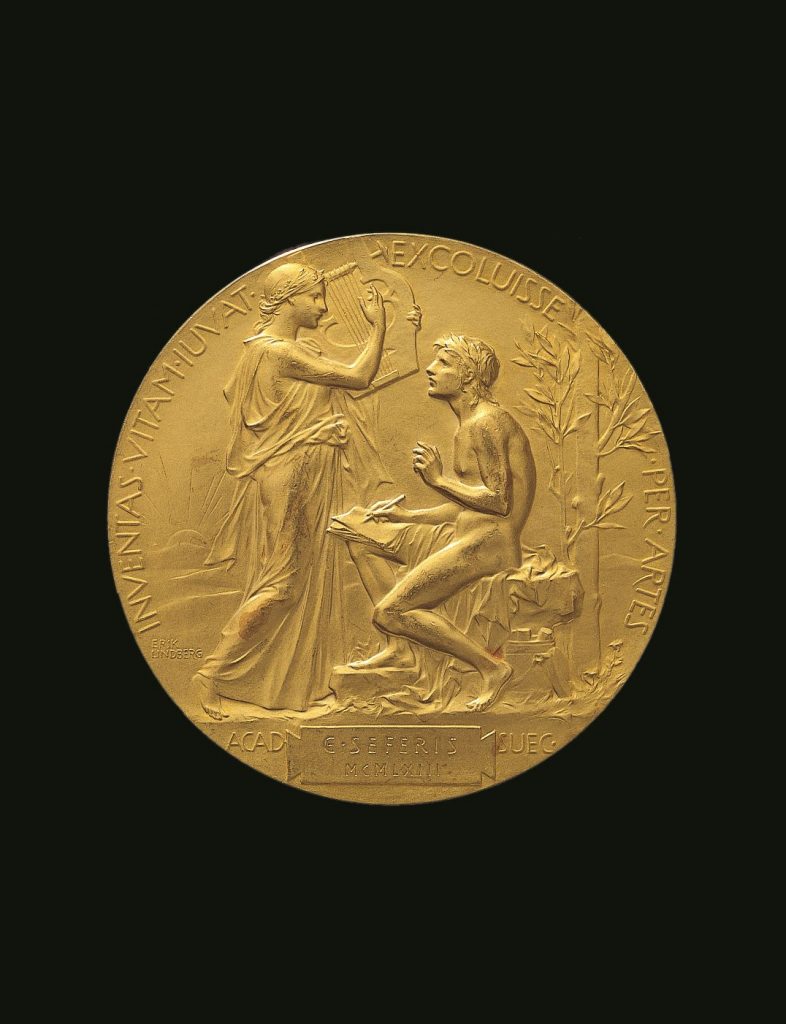
The Gold Medal of the Nobel Prize: Maro Seferis’s Donation to the Benaki Museum”
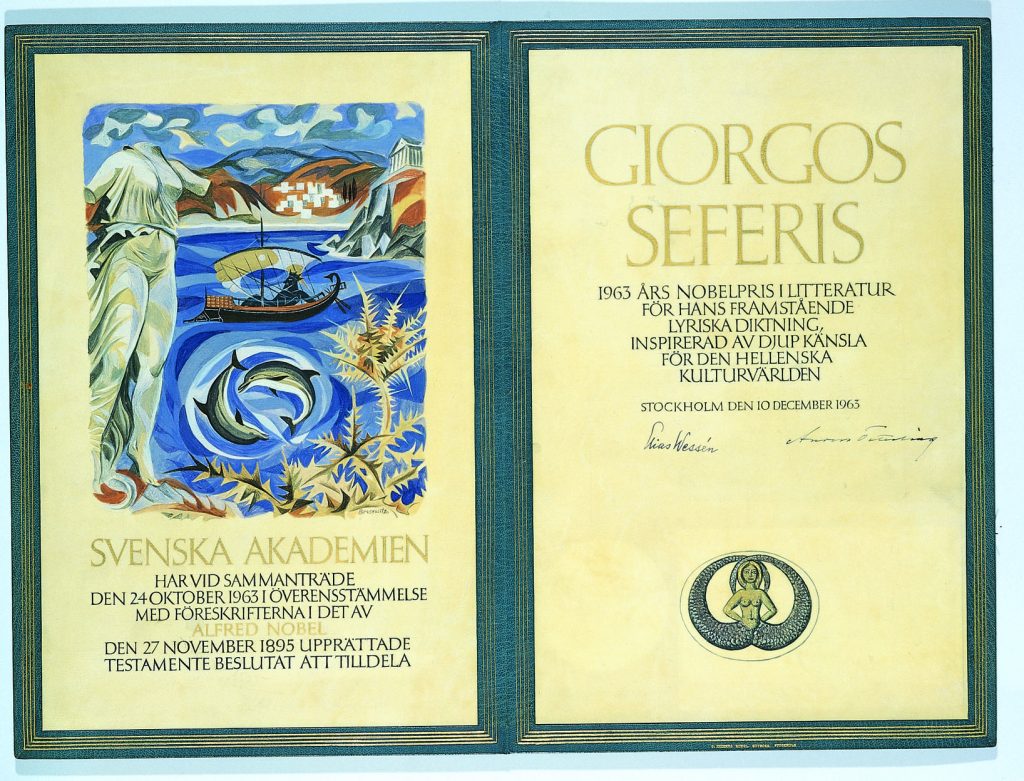
The Diploma of the Nobel Prize: Maro Seferis’s Donation to the Benaki Museum”
Curated by Konstantinos Papachristou, visitors can view congratulatory letters and telegrams to Seferis from prominent Greek personalities of the era, such as Andreas Embirikos, Nikos Hadjikyriakos-Ghikas, Nikos Gavriil Pentzikis, Nanos Valaoritis, and Sofia Vembo.
Maro Seferis’s correspondence with the Benaki Museum regarding the donation of the poet’s Nobel Prize is also presented for the first time.
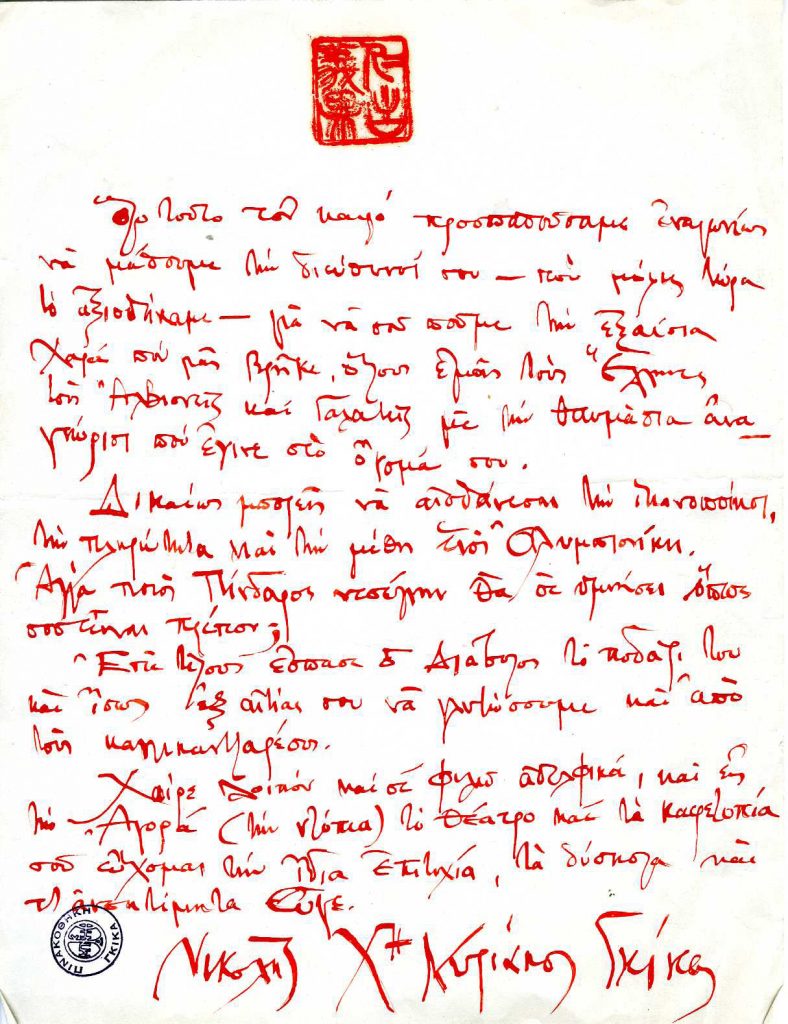
As Seferis’ Nobel Prize took place during a politically turbulent period following Lambrakis’ assassination and Karamanlis resignation, it wasn’t much later that the news on his award were overshadowed. However, the exhibition revives the importance of this extraordinary achievement with photos depicting members of the Swedish community singing outside the poet’s house, newspapers’ front pages from the day of the Nobel Prize announcement, and documents on the poet’s and other personas’ reactions.
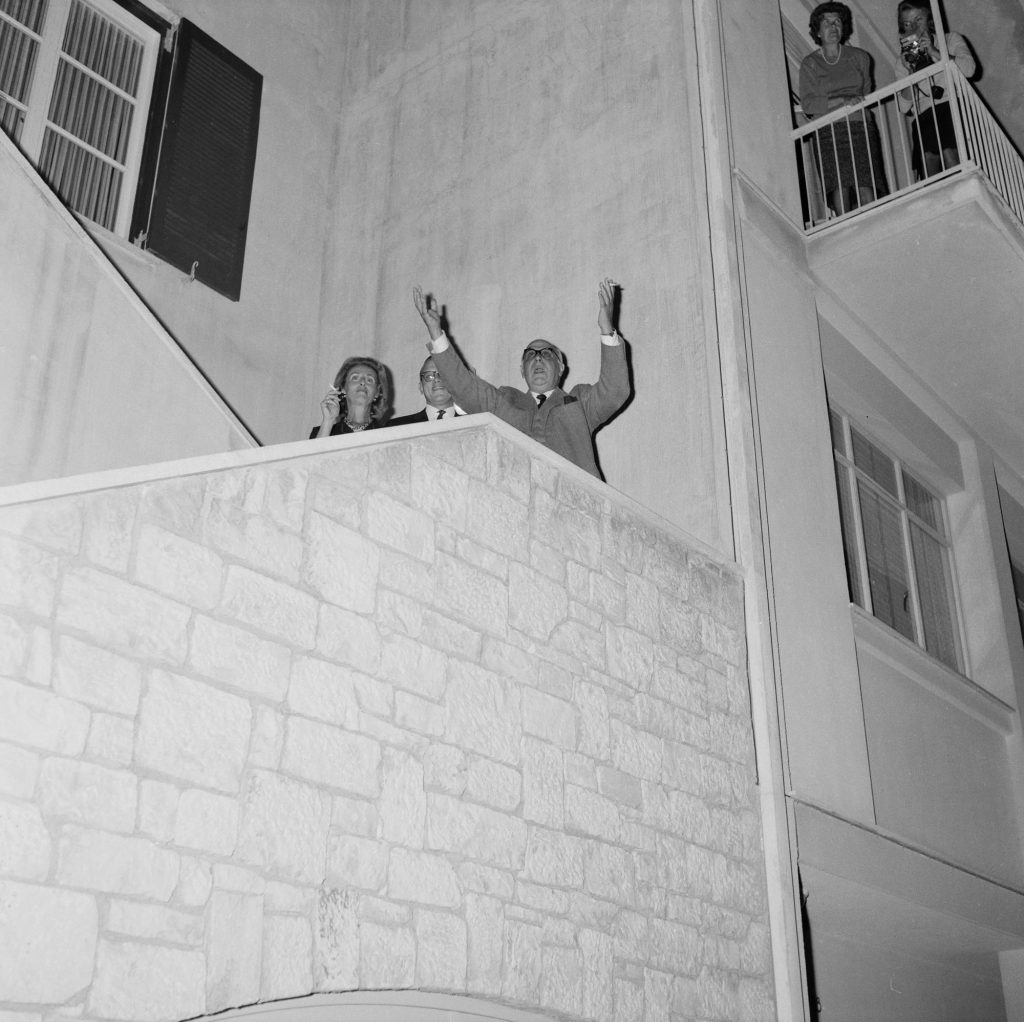
Athens, Oct. 24, 1963, 20 Agras Street, evening. A Visit from members of the Swedish community in Athens for choral congratulations. Behind Seferis is the Swedish Hellenist Šture Linnér, a permanent representative of the UN development program in Greece, who was the advocate for Seferis’ candidacy in the Nobel Prize committee of the Swedish Academy. Next to him his Greek wife, Kleio. Kostas Megalokonomou ©Benaki Museum/Photographic Archives
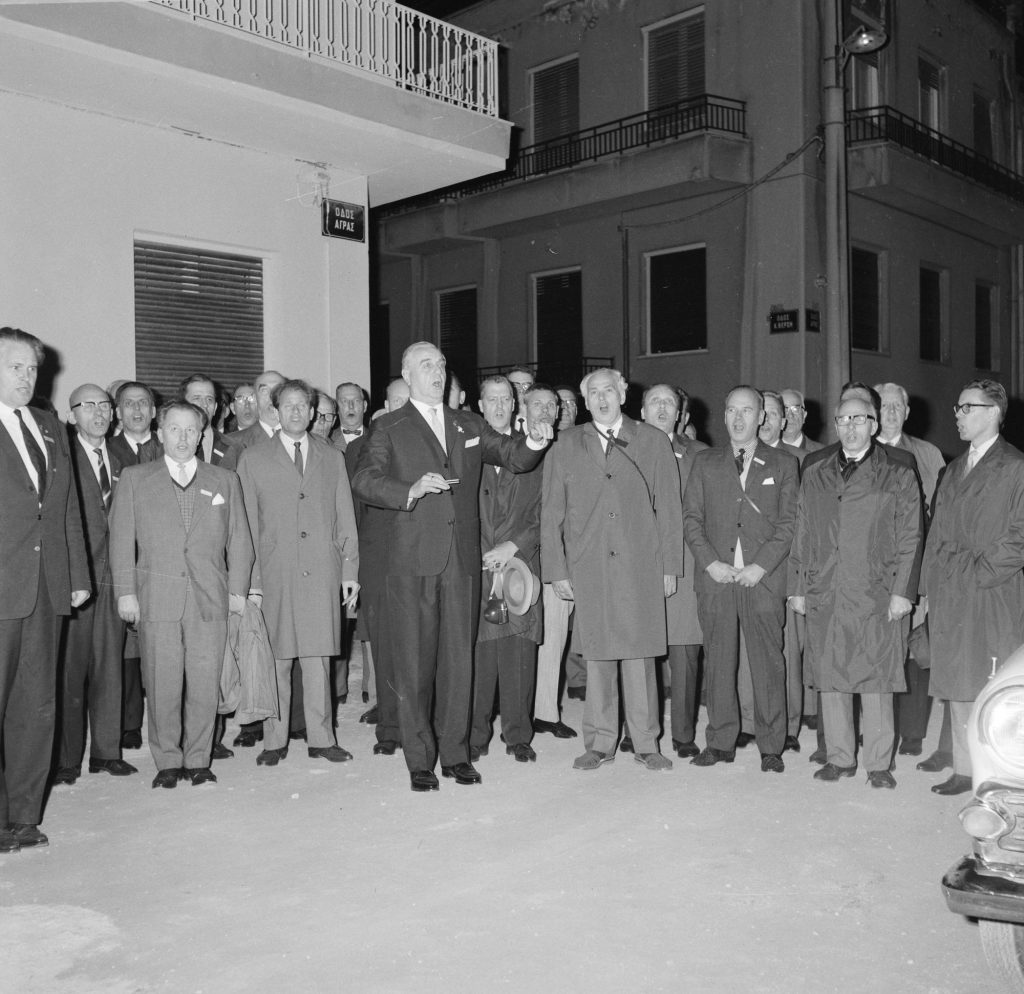
Athens, Oct. 24, 1963, 20 Agras Street, evening. Visit from members of the Swedish community in Athens for choral congratulations. Kostas Megalokonomou ©Benaki Museum/Photographic Archives
Seferis stated in his acceptance speech: “I think that poetry is necessary to this modern world in which we are afflicted by fear and disquiet. Poetry has its roots in human breath – and what would we be if our breath were diminished?”
In commemoration of the 60th anniversary of Seferis’ Nobel Prize, the Greek embassy in London inaugurated the concurrent and still open exhibition “George Seferis: The man, the poet, the diplomat “ at the historic “Seferis Office”, where the Greek Nobel laureate and diplomat (he was Greece’s ambassador to the UK (1957-1962) resided.
Finally, Ikaros Publishing released a new book entitled “I Am a Living Contradiction…” showcasing Seferis’ two significant speeches from the Nobel Prize awards.



